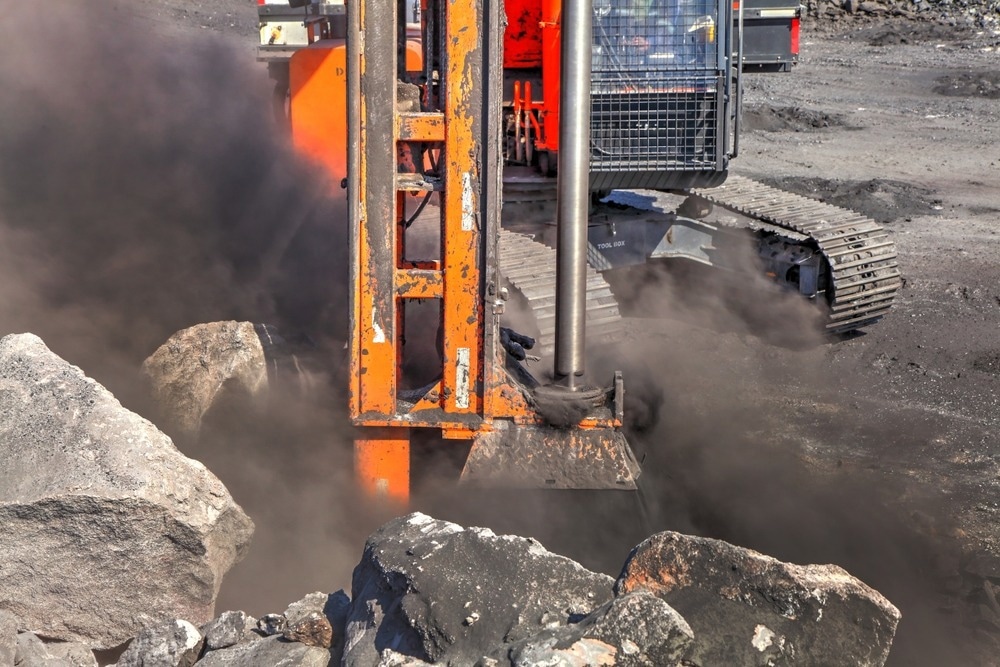In a breakthrough study published in Scientific Reports, scientists have uncovered a crucial, often-overlooked hazard in coal mine dust - agglomerates hiding harmful silica particles. These microscopic clusters, once considered harmless or easily broken apart during sampling, are now shown to persist through standard dust analysis procedures and potentially obscure the true extent of silica exposure in mining environments.

Image Credit: Fiona Barclay Smith/Shutterstock.com
Background
The research background emphasizes silica's significance as a pivotal factor in coal mine dust-related health outcomes. Silica's toxicity stems from its ability to induce lung inflammation and fibrosis upon inhalation, with its presence often linked to severe conditions such as black lung disease.
Previous studies highlight that respirable dust in mines is primarily composed of mineral particles like silica, silicates, and other mineral inclusions. However, the actual particle morphology is complicated by factors such as agglomeration, where particles adhere to form larger entities, altering their physical and chemical properties. Such agglomerates can easily form during dust generation or sampling processes, with the latter potentially disrupting their integrity.
The Current Study
The study employed passive and active sampling techniques across multiple coal mines to collect respirable dust samples.
Passive sampling involved collecting dust without mechanical disruption and preserving agglomerate structures, while active sampling used conventional cyclone-based devices designed to isolate respirable-sized particles.
Both sample types were analyzed using SEM-EDX, enabling detailed morphological and elemental characterization of individual particles.
Automated SEM-EDX analysis protocols, specifically the “supramicron” method, facilitated high-throughput identification of particles within the size range of 1 to 10 micrometers, focusing on their elemental compositions, such as silicon and aluminum, markers for silica and aluminosilicates.
Manual analysis was also conducted to differentiate between individual particles and agglomerates, visually and through elemental maps, considering constituents and morphology. The analysis aimed to assess the prevalence of agglomerates, their dispersibility upon mechanical or chemical intervention, and their potential to contain silica within larger clusters.
Results and Discussion
The analysis revealed a high prevalence of agglomerates within coal mine dust, with estimates indicating that between 27% and 74% of particles were agglomerated rather than independent entities.
SEM-EDX images confirmed that many respirable-sized particles contained silica as individual particles or embedded within larger clusters.
Notably, silica often resided inside agglomerates, and these clusters could persist despite sampling procedures or mechanical dispersion efforts.
The study found that standard sampling apparatuses, including cyclones and tubing, might fragment some agglomerates but not all, meaning that numerous silica-containing clusters could remain intact in the environment, potentially affecting their detectability during analysis.
Automated SEM-EDX processing, which relies on contrast and elemental mapping, sometimes misclassifies agglomerates as singular larger particles, leading to possible underestimations of silica abundance.
The manual analysis underscored that agglomerates' complex structure could obscure the presence of silica, effectively "hiding" it within clusters and resulting in larger apparent particle sizes with less traceable silica content. The dispersibility tests indicated that some agglomerates could be broken apart by mechanical or chemical means, like sonication, but the effectiveness was variable depending on the composition and size of the agglomerates.
These findings suggest that particle morphology - particularly agglomeration - must be carefully considered when interpreting dust analysis results, especially for silica, which poses significant health risks.
The study highlights these findings within the context of occupational health and exposure assessment. The authors highlight that agglomerates are common in the mine environment and are not merely artefacts introduced during sampling or analysis.
Their presence complicates the understanding of actual respirable silica exposure because traditional measurement techniques may either underestimate silica content or misclassify particle sizes due to the influence of agglomeration.
The potential for agglomerates to "hide" silica implies that workers may be exposed to silica within larger clusters that are not accounted for effectively in routine assessments. Since inhaled agglomerates may disperse within the lungs or persist intact, their health impact could differ from that of free, independent silica particles.
Conclusions
The study concludes that silica in coal mine dust often exists within agglomerates, and these clusters can persist through sampling processes, influencing analytical outcomes.
Recognizing the prevalence and stability of agglomerates is critical because they can obscure silica detection, potentially leading to an underestimation of exposure levels when relying solely on traditional particulate analysis methods.
The authors underscore that current analytical techniques, including automated SEM-EDX algorithms, may underestimate silica content due to the misclassification of agglomerates as larger, silica-deficient particles.
The findings point toward the necessity for a paradigm shift in dust analysis protocols - one that accounts for the morphological and compositional intricacies introduced by agglomeration.
Future research should include further refinement of analytical methods and exploration of how agglomeration influences health outcomes, aiming to reduce silica-related occupational hazards effectively.
Source:
Sarver E., Sweeney D., et al. (2025). Exploring agglomeration of respirable silica and other particles in coal mine dust. Scientific Reports, 15, 17497. DOI: 10.1038/s41598-025-01786-6, https://www.nature.com/articles/s41598-025-01786-6